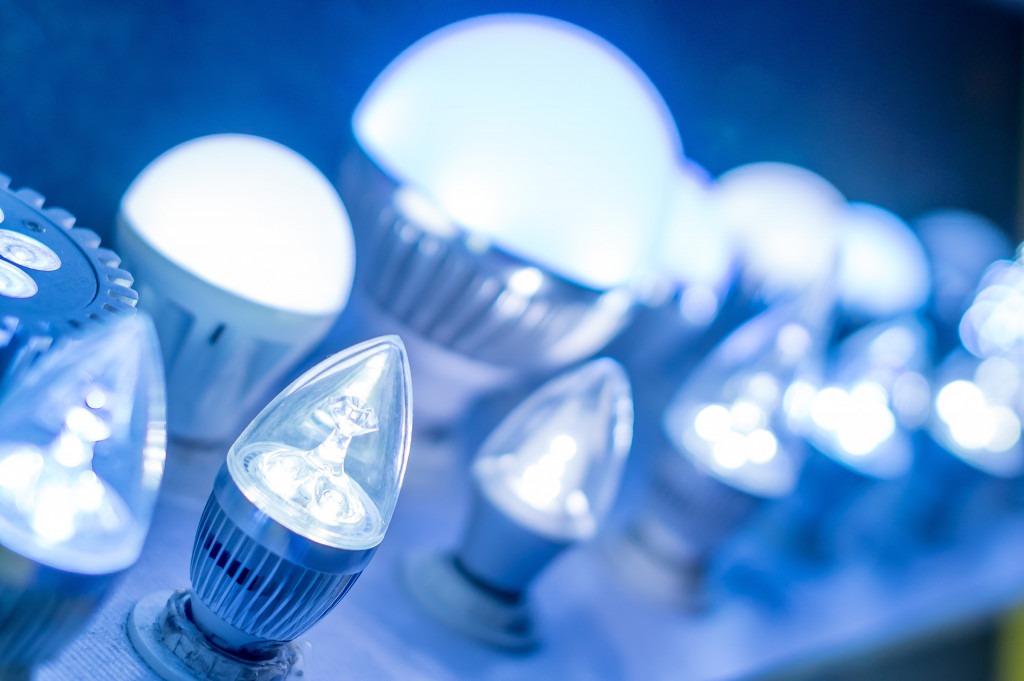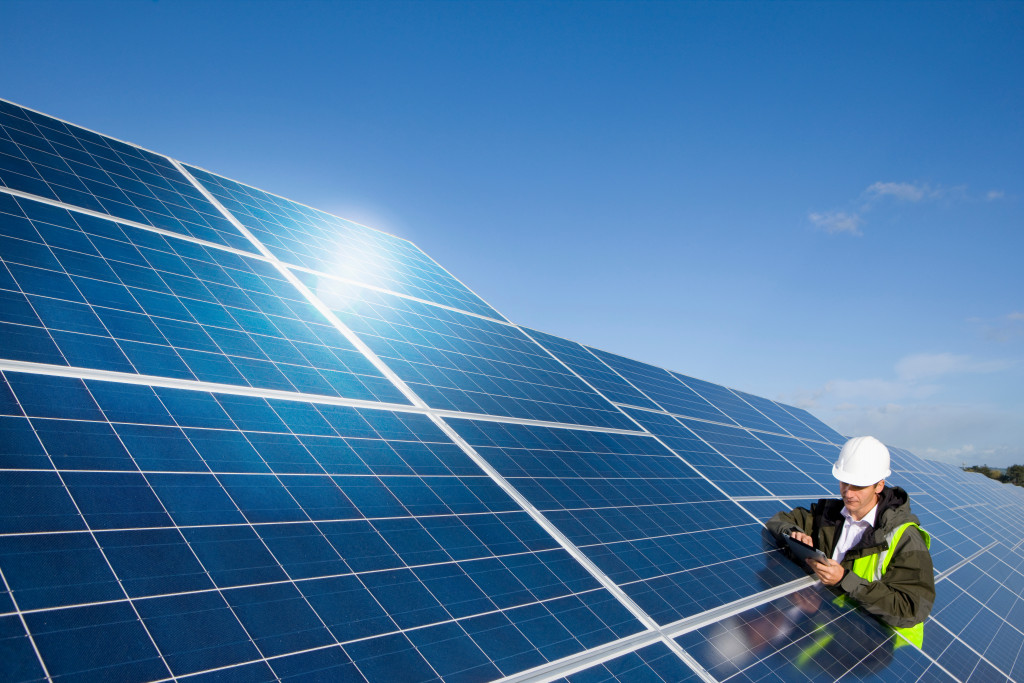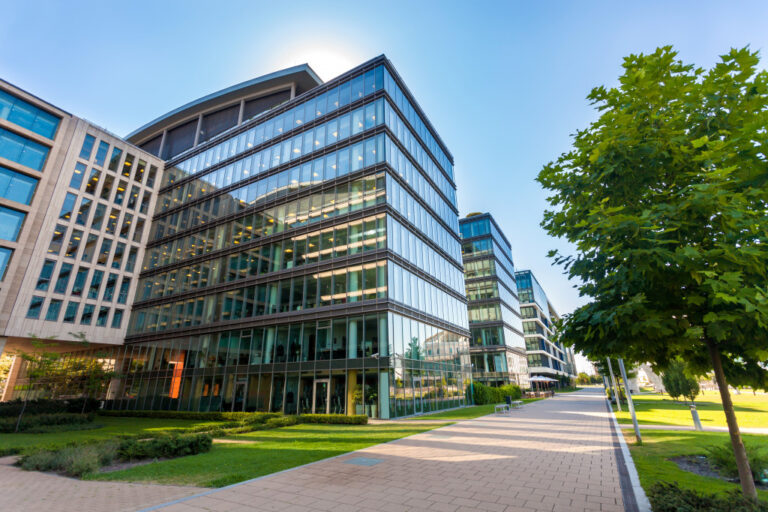- Install skylight for natural lighting and ventilation, reducing reliance on electric lighting and energy-intensive heating/cooling systems.
- Replace traditional lightbulbs with energy-efficient LED or CFL bulbs to reduce energy consumption and carbon footprint.
- Insulate walls and roofs to maintain a comfortable temperature inside the building, decreasing energy usage and carbon emissions.
- Add thermal curtains or blinds to windows to block drafts and regulate temperature.
- Install motion sensor switches for lights and equipment to reduce energy consumption and maintenance costs.
Making your commercial building more energy efficient is an important part of reducing your operating costs and helping to protect the environment. There are simple, cost-effective steps you can take to reduce energy consumption in your business. By assessing and implementing these measures, you can save money on energy bills while doing something positive for the planet.
Use energy-efficient fixtures and gadgets
Using energy-efficient fixtures and gadgets is a cost-effective way to reduce energy consumption in your business. Here are some of the best energy-saving practices that you can implement in your commercial building
Install quality dome roof lights
Installing quality dome roof lights is smart for any commercial building owner looking to reduce energy costs. At its core, the dome roof light installation fits a large transparent window into an opening in the building’s roof. This installation allows natural light to pour into the building, effectively reducing the reliance on electric lighting during daylight hours.
The enhanced ventilation with dome roof lights can create a more comfortable working environment for employees, reducing the need for energy-intensive heating and cooling systems. When done correctly, installing quality dome roof lights can significantly impact a building’s overall energy efficiency, making it a cost-effective and environmentally-friendly choice for any savvy property owner.
Use energy-efficient lighting

Energy-efficient lighting can significantly impact reducing energy consumption in commercial buildings. By replacing traditional light bulbs with LED or CFL bulbs, building owners can save on energy costs and reduce their carbon footprint. Besides being long-lasting and durable, energy-efficient lighting requires less energy, making them a sustainable choice.
This can lead to a reduced environmental impact, enhanced brand image, and improved indoor comfort for occupants. Building owners need to understand the benefits of energy-efficient lighting and its positive impact on their bottom line. By reducing their energy consumption, they contribute to a greener planet and create a more comfortable and efficient space for their tenants.
Insulate walls and roofs to reduce heat loss
Proper insulation of walls and roofs is crucial to increase energy efficiency in commercial buildings. This process involves installing a material layer inside walls or on the attic to help reduce heat loss. The effects of proper insulation are long-lasting and can lead to a significant reduction in energy bills.
Insulation is necessary in commercial buildings, where large amounts of energy are used. Poor insulation can lead to excessive heat loss during winter and heat gain during summer months, which can cause an increase in cooling and heating costs.
Proper insulation helps maintain a comfortable climate inside the building while decreasing energy consumption and reducing carbon emissions. Not only does this lead to a more comfortable work environment for employees, but it also positively impacts the environment. Therefore, commercial building owners must ensure proper insulation to make their buildings more energy-efficient.
Add thermal curtains or blinds to windows
Adding thermal curtains or blinds to commercial buildings can be a game-changer regarding energy efficiency. Thermal curtains or blinds are designed to block drafts and regulate temperature, making them essential in minimizing energy costs.
Not only do these types of window treatments help maintain a consistent temperature, but they also reduce the need for artificial lighting by allowing in natural light. Proper installation is key to optimizing the effectiveness of thermal curtains or blinds.
They should fit snugly against the window frame and be drawn closed when not in use. Investing in thermal curtains or blinds may seem like a small change, but it can make a big difference in energy conservation and cost savings over time.
Use motion sensor switches
Motion sensor switches are commonly used in commercial buildings to save energy, reduce costs, and enhance security. These switches automatically detect movements in a room and turn on the lights or equipment. The benefits of motion sensor switches are numerous. They help reduce energy consumption by turning off the equipment or lights when no one is present, reducing energy bills.
Additionally, motion sensor switches help improve lighting quality by ensuring that areas in use are well-lit, reducing accidents and injuries. Using motion sensor switches also reduces maintenance costs as the lights and equipment last longer due to reduced usage. Investing in motion sensor switches allows commercial building owners to reduce costs and contribute to a greener and more sustainable environment.
Invest in renewable sources of power

Investing in solar panels or other renewable power sources is essential for businesses looking to make their commercial buildings more energy-efficient. As a source of clean and renewable energy, solar panels have helped businesses significantly reduce their carbon footprint while saving on energy costs in the long run.
Investing in these systems requires assessing your building’s energy needs and determining the right-sized system to meet them. Working with a reputable solar company ensures that your solar power system’s design, installation, and maintenance are handled professionally, leading to increased efficiency and long-term savings. Transitioning to renewable energy is a cost-effective decision and helps promote environmental sustainability by reducing reliance on fossil fuels.
These are just a few ways to reduce energy consumption in your commercial building. Following these steps can save money on energy bills and contribute to a greener future.




